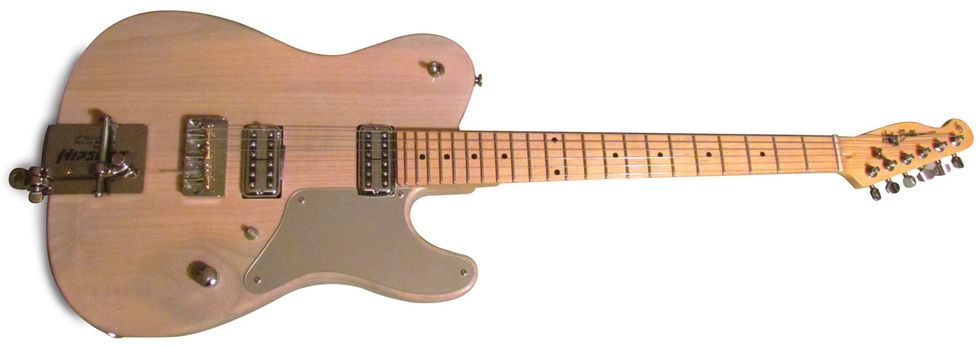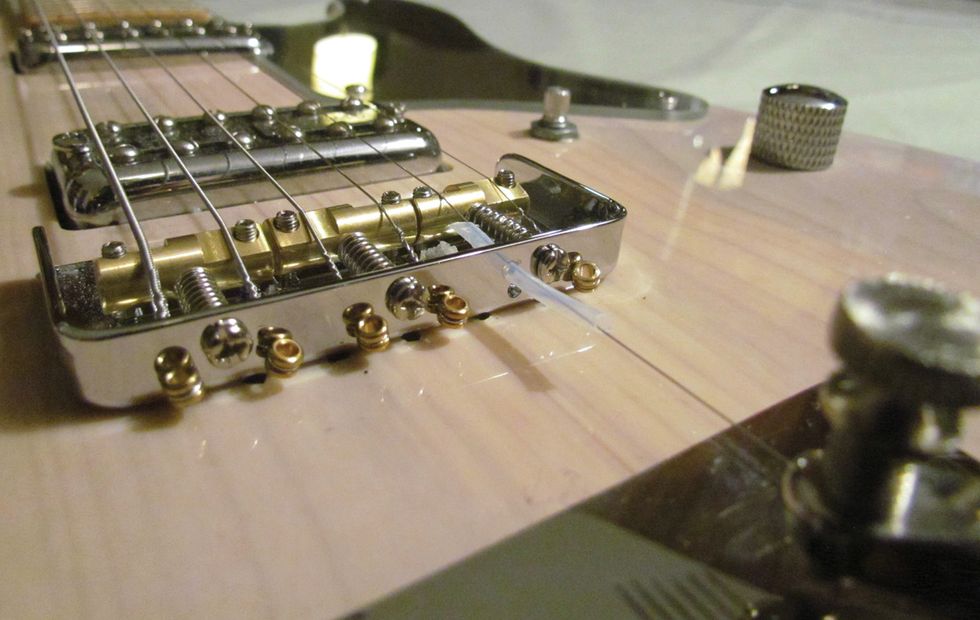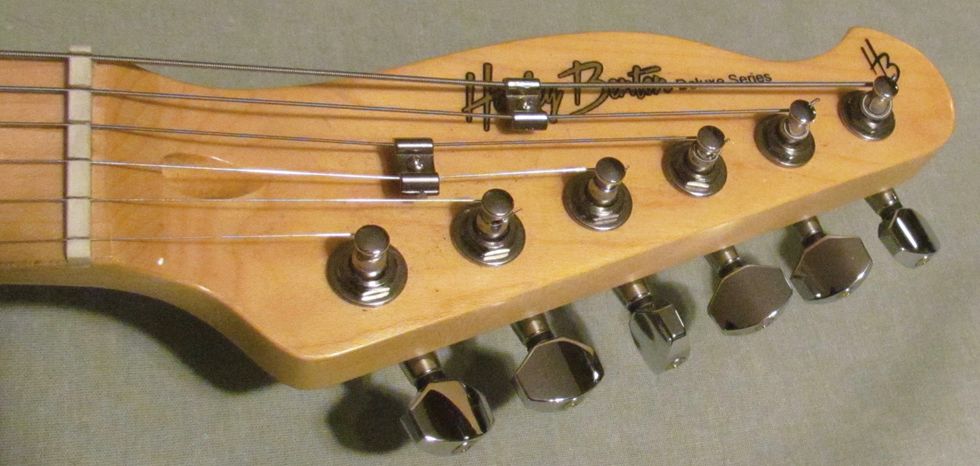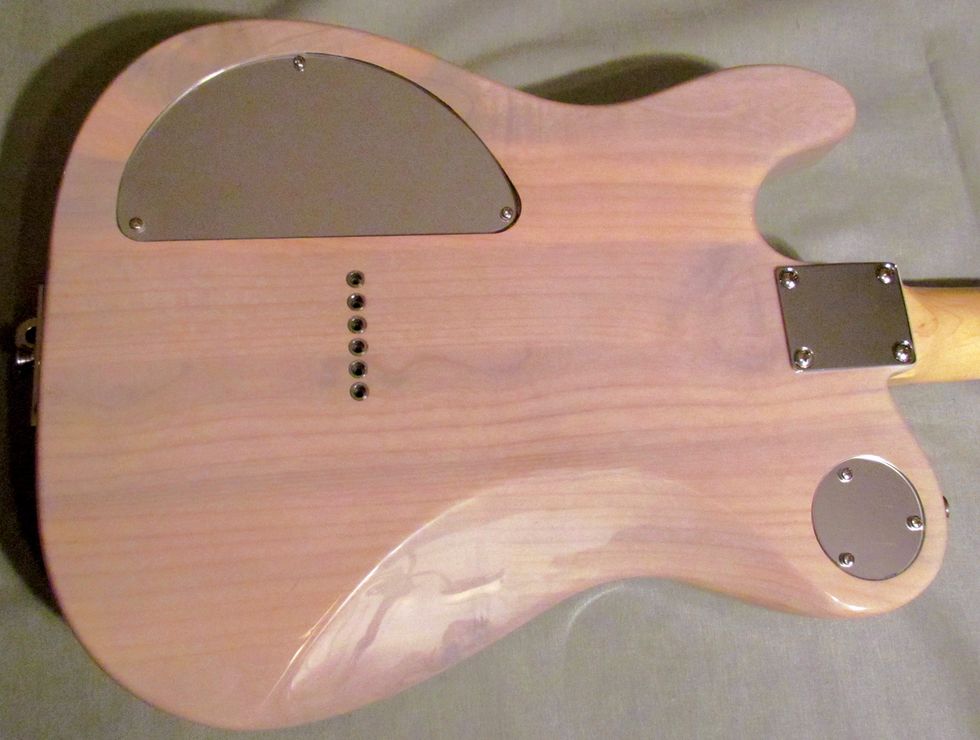I always keep my eyes and ears open for new gear. A few months ago, I was conversing via email with fellow PG contributor Dirk Wacker, who writes the Mod Garage column. He was telling me about a European company called Harley Benton that makes good, inexpensive guitars. So I started searching eBay for that brand. After a while, I found this guitar, which looked interesting. It was a TE-90 FLT SB Deluxe T-Style that had Roswell Filtertron pickups, a reverse headstock, an S-style bridge, a Mary Kay-type finish, and a maple fretboard. It had a “Buy It Now” price of $195 plus $55 shipping.
I wasn’t sure I wanted it, but after several days I pulled the trigger. After taxes and shipping, the total was $268. It wasn’t a great deal, but it was okay. Then the seller informed me that he was going to remove the neck for shipping. I almost threw a fit over that, but finally reasoned that if I was meant to have the guitar, it would be fine. Bottom Feeder Tip #367: Make sure you read the fine print on an auction.
Note the additional hole our columnist drilled through the Wilkinson ashtray bridge he installed, to allow more fluid movement of the B-string without snagging or popping off the saddle.
It arrived a week later from California, and it looked stunning. I quickly assembled the neck, put on a set of strings, and, I have to confess, it really had me at hello. It felt solid in my hands, stayed in tune, and played easily. I plugged it in and it did not disappoint. The Roswell Filtertrons didn’t exactly sound like the Gretsch versions, but they sounded really good and seemed to have their own personality. After a few hours playing my new 6-string, I made a decision reserved for only a select few guitars: I was ready to slap on a Hipshot B-Bender.
Here’s a close-up of the reverse headstock, with two double-string retainers and chrome hardware.
So, I took the strings off, shimmed up the pickups with stiff foam rubber to be closer to the strings (there are no springs), then went to my bridge drawer and grabbed a Wilkinson half-size T-style ashtray bridge with 3-way compensated saddles. It’s a handy bridge to keep on hand for all kinds of projects, because it can work on top-loading as well as bottom-loading guitars.
The contoured rear body is a nice ergonomic touch. The semi-transparent, pink, Mary Kay-type finish also nicely displays the grain of the ash.
I could’ve used the existing hole for the B string, but since the angle over the B-string saddle is critical, I like to drill a second, higher hole in the back of the ashtray for tuning stability. Too steep an angle and the string tends to hang up, not going back down to pitch properly. Too little angle and the string will pop out of its slot on the saddle, especially if you use a pick and fingers like I do. Finally, installing the Hipshot was the easiest part.
Everything took about three hours from start to finish, but I wound up with a nice playing and sounding guitar with a bender. So, is it a keeper? For now I’d say it is. The guitar really feels solid, sounds great, and is fun to play. What else do you need?















![Rig Rundown: Russian Circles’ Mike Sullivan [2025]](https://www.premierguitar.com/media-library/youtube.jpg?id=62303631&width=1245&height=700&quality=70&coordinates=0%2C0%2C0%2C0)







